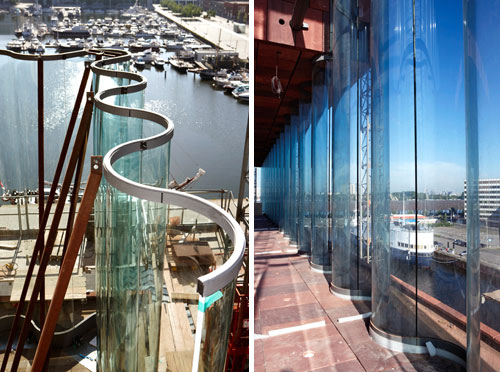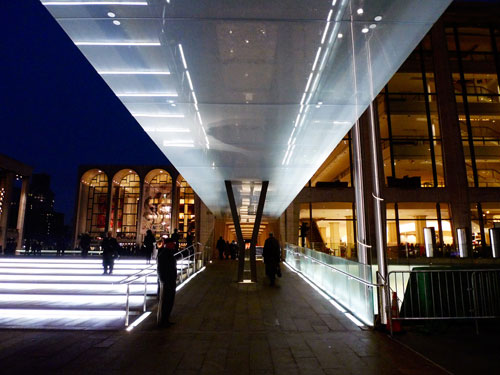Shattering Myths About Glass
At the building corners, two layers of 18-foot-high panels are stacked on top of each other. The stacked glass panels in the Casa da Música incorporate steel I-beams to help support the wind load, but only a hollow steel tube, which is set back 1.5 feet behind the corrugated panels, is used for that purpose at MAS's 36-foot-high spans. To connect the stacked panels, a steel U-profile is glued to the top of the lower panel and the underside of the upper panel, then bolted together with a corrugated steel plate in front and back. Structural silicone joins the individual vertical panels, each forming one S-shape 5.25 feet long.
The corrugated glass is fabricated in a similar fashion to curved glass, but goes one step further. A flat glass panel, cut to the appropriate dimensions, is placed in a furnace, where it melts over a mold. Since the glass gets its stiffness from its shape, the designers could use ordinary float glass rather than laminated or tempered glass, allowing significant cost savings.
According to Nijsse, the curved glass only produces slight deformation in views when standing at a distance from the panels. Its effect on the overall building, he says, is a "spectacular openness."
 |
The building is one of the first to use structural corrugated glass. Panels 18 feet high are stacked on top of each other at the building's corners. Photos: © Toon Grobet |
Â
Of course, the desire to create a spectacular openness makes glass the material of choice. Diller Scofidio + Renfro enlisted Dewhurst Macfarlane, engineers of the iconic, glass-themed Apple flagship stores, for the design of a pair of canopies at New York's Lincoln Center. "They really just wanted a slab of nothing to keep the rain off people walking from the buildings to the street," recalls Tim Macfarlane. The nearly 90-foot-long canopies connect to existing building columns at one end and are supported by a pier toward the middle, leaving close to 40 feet of overhead glass to cantilever above.
"The real innovation here is that the glass structure stabilizes the steel," Macfarlane says. "We've gone from steel supporting glass, to glass supporting glass, to glass supporting steel." The canopies consist of a series of 14-foot-6-inch-by-7-foot-7-inch glass panels, joined by weathering silicone, underneath a pair of bent steel beams, which, according to the engineers, would buckle were it not for the glass below. A small glass panel located between the legs of the pier provides lateral support to the canopy.
 
|
|||
89-foot-long glass canopies were recently unveiled as part of the ongoing redesign of New York's Lincoln Center by Diller Scofidio + Renfro. Photo: © Mark Bussell |









